Andrea Schaerf
University of Udine, Italy
Educational Timetabling: Problems, Benchmarks, and State-of-the-Art Results
Jan 19, 2022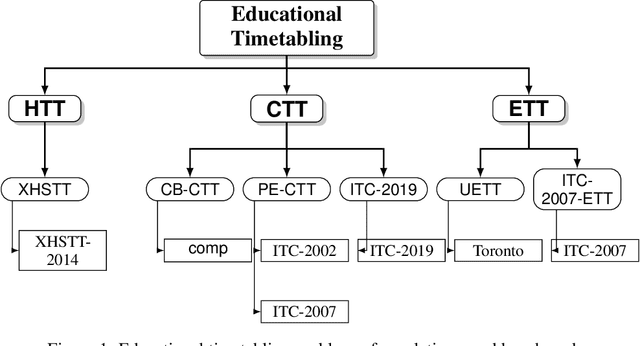
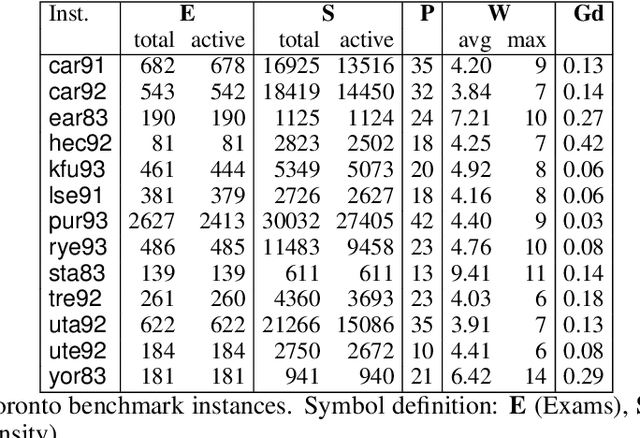
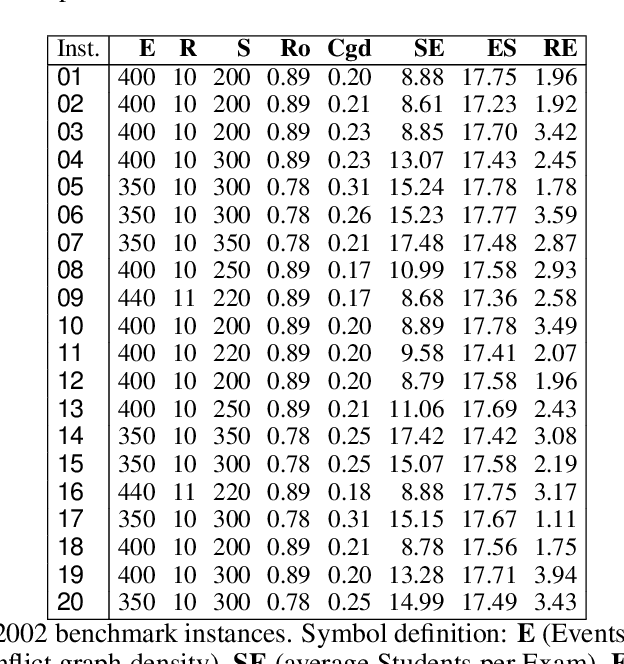
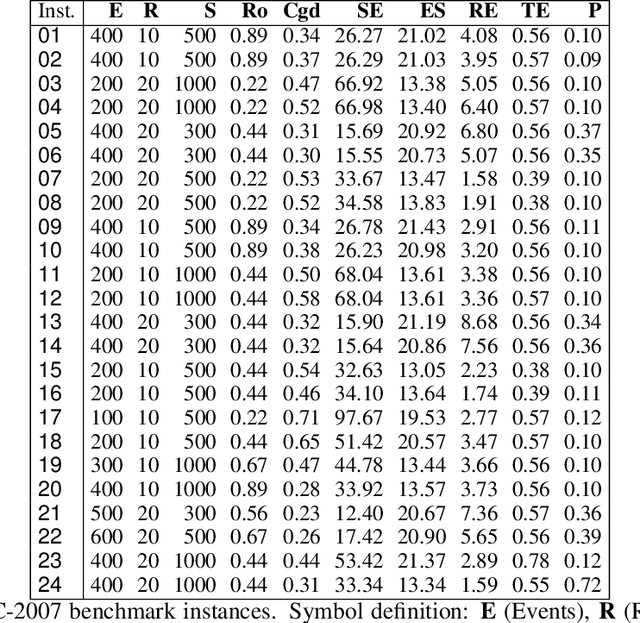
Abstract:We propose a survey of the research contributions on the field of Educational Timetabling with a specific focus on "standard" formulations and the corresponding benchmark instances. We identify six of such formulations and we discuss their features, pointing out their relevance and usability. Other available formulations and datasets are also reviewed and briefly discussed. Subsequently, we report the main state-of-the-art results on the selected benchmarks, in terms of solution quality (upper and lower bounds), search techniques, running times, statistical distributions, and other side settings.
Feature-based tuning of simulated annealing applied to the curriculum-based course timetabling problem
Jul 08, 2015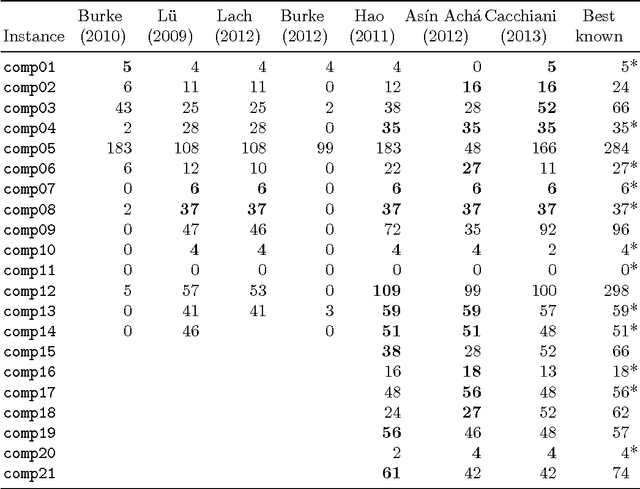
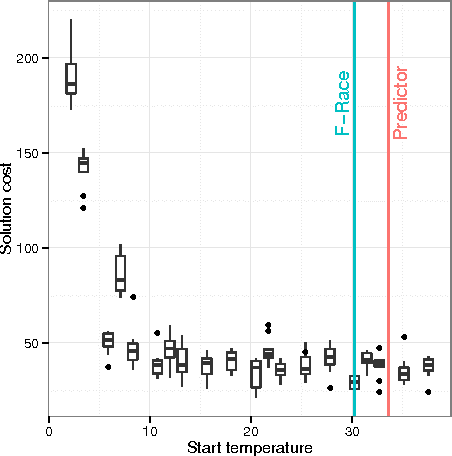
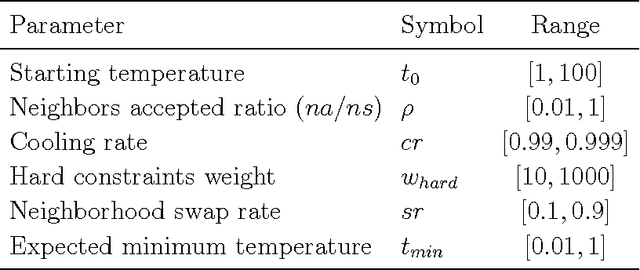

Abstract:We consider the university course timetabling problem, which is one of the most studied problems in educational timetabling. In particular, we focus our attention on the formulation known as the curriculum-based course timetabling problem, which has been tackled by many researchers and for which there are many available benchmarks. The contribution of this paper is twofold. First, we propose an effective and robust single-stage simulated annealing method for solving the problem. Secondly, we design and apply an extensive and statistically-principled methodology for the parameter tuning procedure. The outcome of this analysis is a methodology for modeling the relationship between search method parameters and instance features that allows us to set the parameters for unseen instances on the basis of a simple inspection of the instance itself. Using this methodology, our algorithm, despite its apparent simplicity, has been able to achieve high quality results on a set of popular benchmarks. A final contribution of the paper is a novel set of real-world instances, which could be used as a benchmark for future comparison.
Second International Nurse Rostering Competition (INRC-II) --- Problem Description and Rules ---
Jan 17, 2015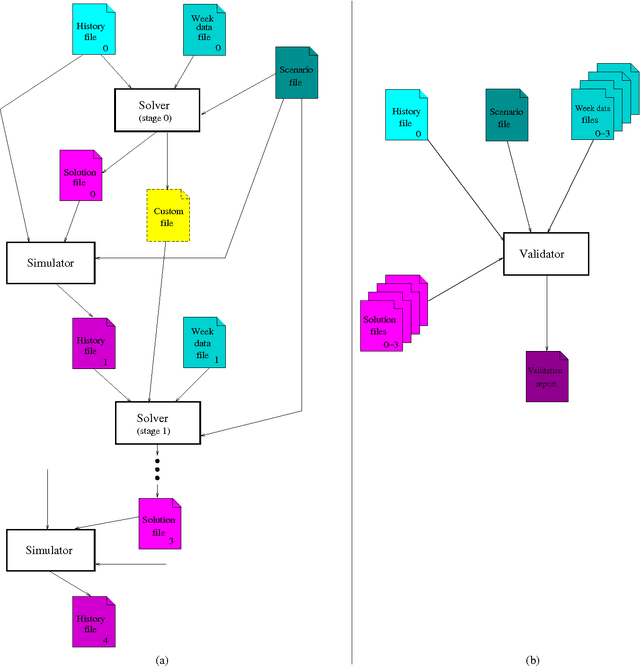
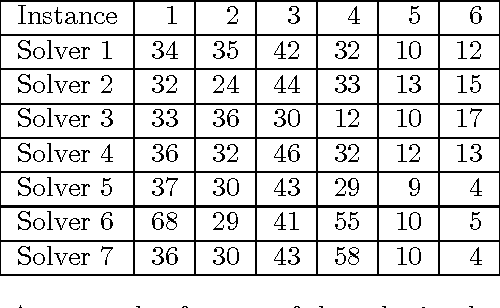
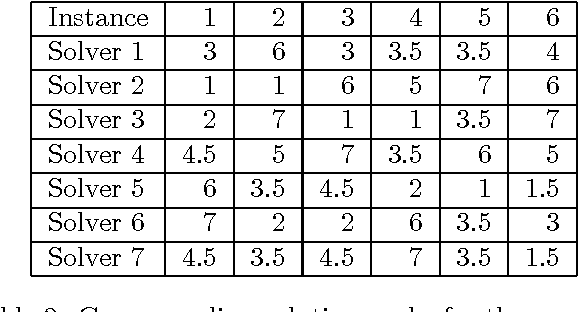
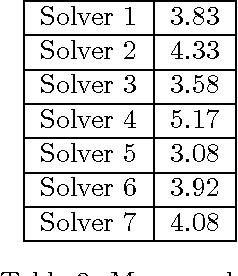
Abstract:In this paper, we provide all information to participate to the Second International Nurse Rostering Competition (INRC-II). First, we describe the problem formulation, which, differently from INRC-I, is a multi-stage procedure. Second, we illustrate all the necessary infrastructure do be used together with the participant's solver, including the testbed, the file formats, and the validation/simulation tools. Finally, we state the rules of the competition. All update-to-date information about the competition is available at http://mobiz.vives.be/inrc2/.
Local Search Techniques for Constrained Portfolio Selection Problems
Apr 18, 2001



Abstract:We consider the problem of selecting a portfolio of assets that provides the investor a suitable balance of expected return and risk. With respect to the seminal mean-variance model of Markowitz, we consider additional constraints on the cardinality of the portfolio and on the quantity of individual shares. Such constraints better capture the real-world trading system, but make the problem more difficult to be solved with exact methods. We explore the use of local search techniques, mainly tabu search, for the portfolio selection problem. We compare and combine previous work on portfolio selection that makes use of the local search approach and we propose new algorithms that combine different neighborhood relations. In addition, we show how the use of randomization and of a simple form of adaptiveness simplifies the setting of a large number of critical parameters. Finally, we show how our techniques perform on public benchmarks.
Programming in Alma-0, or Imperative and Declarative Programming Reconciled
Apr 05, 2000Abstract:In (Apt et al, TOPLAS 1998) we introduced the imperative programming language Alma-0 that supports declarative programming. In this paper we illustrate the hybrid programming style of Alma-0 by means of various examples that complement those presented in (Apt et al, TOPLAS 1998). The presented Alma-0 programs illustrate the versatility of the language and show that ``don't know'' nondeterminism can be naturally combined with assignment.
* With updated references with respect to the published version
 Add to Chrome
Add to Chrome Add to Firefox
Add to Firefox Add to Edge
Add to Edge